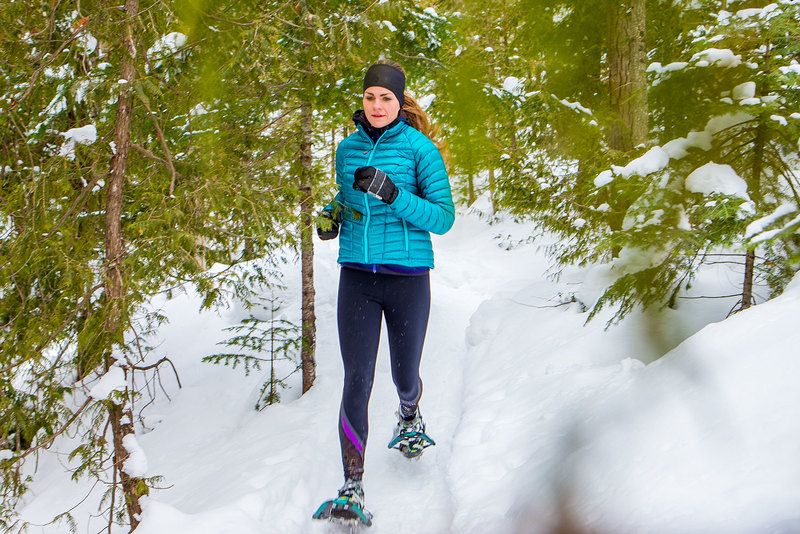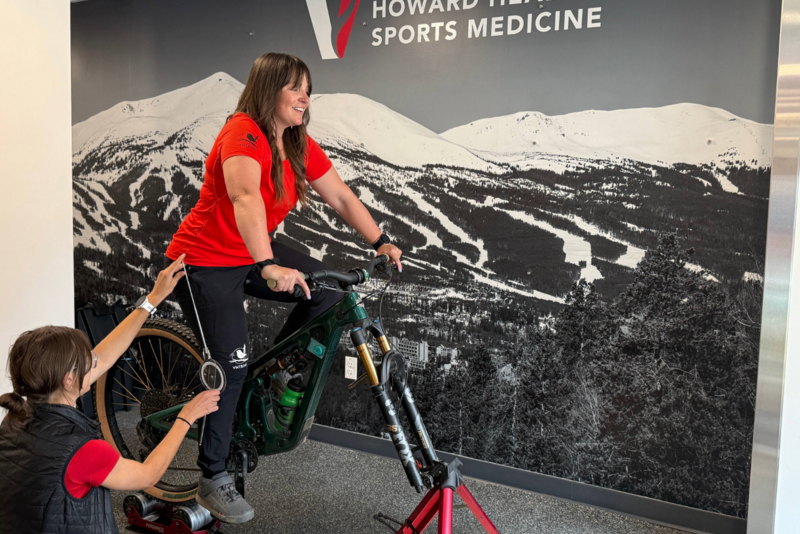News
Four Tips for Snowshoe Running
Kamerin Hargrove
November 28, 2023

The snow is here! But runners don’t have to stop conditioning outdoors, and in fact, there are a variety of winter sports that can help maintain and even improve your cardiovascular health and running efficiency. Cross country skiing, fat biking and ski touring are all effective ways to get your heartrate up and increase endurance. In addition, while often overlooked by dryland runners, snowshoe running is an excellent way to get outside, increase cardiovascular endurance and build leg strength.
“Snowshoe running is arguably the best way to maintain your running fitness during the winter,” said Phillip Galloway, a physical therapist at Howard Head Sports Medicine and a founder of the Vail Valley Running Club.
“I’d go so far as to say that snowshoe running is even more effective than treadmill running,” said Galloway. “While treadmill running is great for maintaining form and efficiency, trail runners may lose the dynamic balance of a variable terrain beneath their feet and become more susceptible to rolled ankles and fall-related injuries.”
Galloway offers the following tips to get you started in your new favorite sport.
- Start slow. Even the lightest snowshoes add weight to your feet and snow can be an unfamiliar surface at first. Take it easy while your body adjusts by recruiting muscles you might not normally use. You’ll notice your running mechanics will shift. You may need to widen your stance and change you leg swing to avoid stepping on your snowshoes. Give yourself a few weeks to adapt to the new demands—instead of trying to hit a certain pace when you set out initially, aim to snowshoe run for the time that you are accustomed to dryland running and watch your rate of perceived exertion (RPE). The RPE scale is measured from 1-10—one is sleeping and 10 is the hardest workout imaginable. Early on, it is best to keep your runs between an RPE of 5-7.
- Choose the right snowshoes for you. Modern running snowshoes can be a bit pricey, but they are small and lightweight, making the experience more similar to dryland running. The more traditional hiking snowshoes are heavier and wider, which may cause an increased risk of muscular overuse, injury, overall fatigue, and a generally unpleasant experience.
- Keep your feet dry. One of the downsides of snowshoe running is…well, snow! Snow melts, which can quickly translate to a pair of cold feet and an increase in the risk of cold exposure injuries, like frostnip or frostbite. Therefore, in addition to snowshoes, you may want to buy waterproof shoes. Several brands make a winter waterproof shoe that does a great job creating a waterproof barrier. Some may run hot due to the lack of moisture exchange for your foot and are therefore best suited for very cold temperatures. Another option to keep your feet dry are gaiters that hook over the top of your shoe to block out moisture. If you are in a pinch, duct tape can work as well, but the tape has difficulty sticking well in colder temperatures. If you are going the duct tape route, put the tape on before you go outside.
- You do not always need snowshoes! If you have shoes with good traction and you can stay on a packed path or groomed area, you may be surprised by how well you can run without slipping. Just be careful of icy conditions.
More News
-
More

Eagle physical therapist joins the U.S. Air Force’s 9G club
Eagle resident Devyn Kammert, a physical therapist with Howard Head Sports Medicine,
-
More

Optimize Your Ride: What Is a Medical Bike Fit and Why It Matters
Whether you're a weekend warrior, daily commuter or competitive cyclist, comfort and performance on your bike are...
-
More

Travel Tips to Combat Soreness & Fatigue
While some chase the snow, others are heading to the beach for warmer weather. Travel is a common passion of those...





